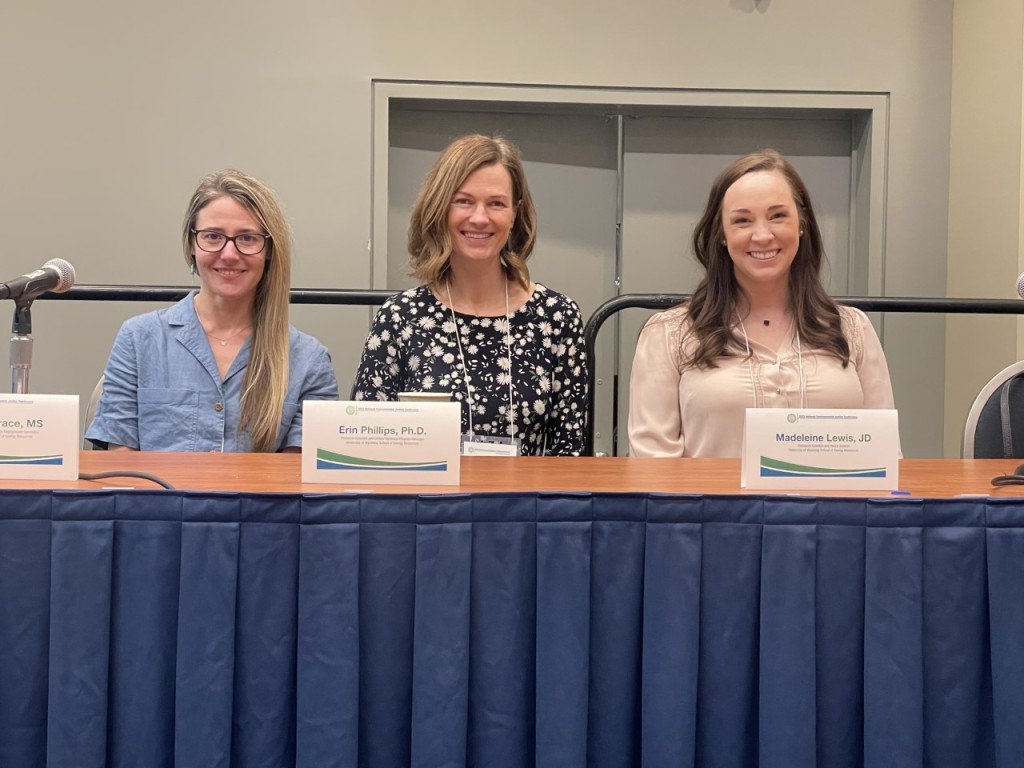SER Researchers Present on Environmental Justice Topics Related to Emerging Critical Mineral Industries
Published March 24, 2023
By Christine Reed
The School of Energy Resources (SER) was represented by three researchers at the National Environmental Justice Conference (NEJC) & Training Program in Washington D.C. that was held March 7-9.
NEJC is a Non-Profit Organization that brings together community members, academia, the private sector and state and local officials, as well as federal and state government representatives to examine the state of environmental justice and share best practices.
SER Project Manager Erin Phillips in the Center for Economic Geology Research (CEGR) was accompanied at the event by Selena Gerace and Maddie Lewis, both research scientists in the Center for Energy Regulation and Policy Analysis (CERPA) and CEGR. The trio facilitated a workshop related to the environmental justice (EJ) challenges and opportunities associated with developing critical mineral industries in the United States.

Phillips, who leads the critical mineral and rare earth element projects at SER, says that as the demand increases for low-carbon forms of energy, demand is also rapidly increasing for the critical minerals which are necessary for many of these low-carbon energy technologies, and with that comes prolific environmental justice considerations.
“The workshop really allowed us to consider how critical mineral industries can be developed to embrace, embody, and promote social and environmental justice,” says Phillips. “What does this look like and what support will be needed to achieve it?”
EJ has becoming an increasingly prevalent topic of discussion, particularly in conversations about new and emerging energy technologies. Recognized as the fair treatment and meaningful involvement of all people in a community, EJ seeks to protect groups of people from bearing a disproportionate share of the negative environmental consequences as a result of development.
“As we look to develop a domestic critical mineral industry to meet rising demands, we are looking at ways in which we can address EJ concerns across the entire supply chain and make sure that we are creating a new industry in a sustainable way,” Gerace says. “There is a real opportunity to be proactive, but we also want to bring attention to barriers that may present challenges for developing environmentally just critical mineral industries.”
Examples of areas in which EJ issues will play a part in the roll-out of a critical mineral industry include environmental impact assessments, waste management, social license to operate, transportation, and workforce development. Phillips, Gerace, and Lewis work to address some of these topics and to gauge the evolving perceptions of stakeholders in those areas. Public opinion can significantly influence regulatory decisions and as such, community participation is a real cornerstone of EJ.
“Everyone should have the opportunity to live in a community that is healthy and safe, and to also benefit from the economic and technical advancements that a new industry can bring to an area,” adds Lewis. “Through community engagement initiatives and continued outreach, we hope that any concerns will be heard in the decision-making process and that we can advance these new industries.”
